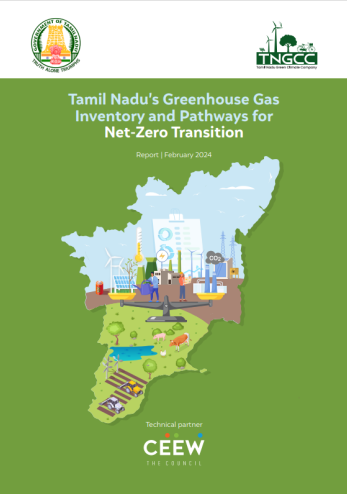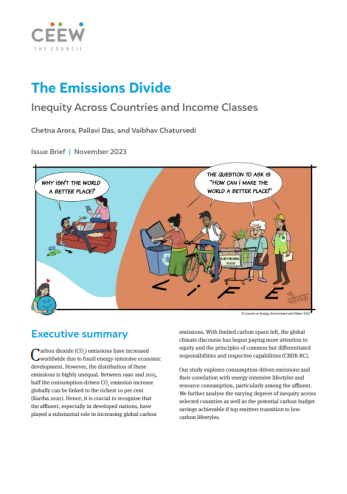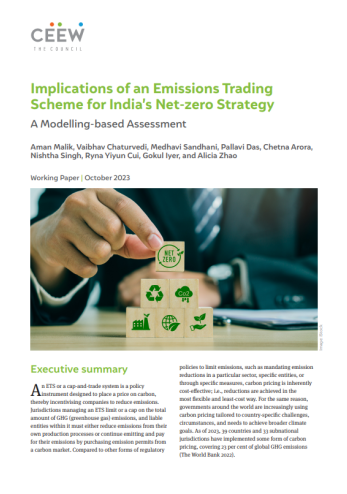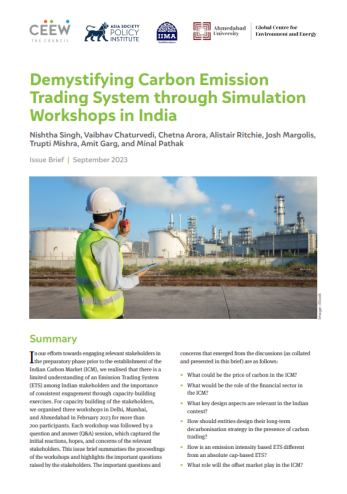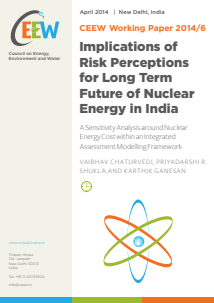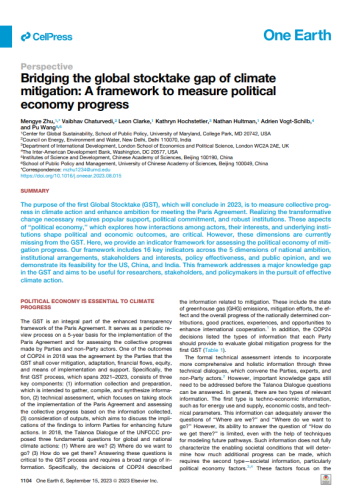Paper
Implications of Risk Perceptions for Long Term Future of Nuclear Energy in India
A Sensitivity Analysis around Nuclear Energy Cost within an Integrated Assessment Modelling Framework
Vaibhav Chaturvedi, Priyadarshi R Shukla, Karthik Ganesan
April 2014 | Low-carbon Economy
Suggested Citation: Chaturvedi, Vaibhav, Priyadarshi R Shukla, and Karthik Ganesan. 2014. Implications of Risk Perceptions for Long Term Future of Nuclear Energy in India: A Sensitivity Analysis around Nuclear Energy Cost within an Integrated Assessment Modelling Framework. New Delhi: Council on Energy Environment and Water.
Overview
This paper highlights the implications of increased nuclear energy costs on India’s energy mix and its emission mitigation strategy. It undertakes a sensitivity analysis of nuclear energy cost, including scenarios that internalise nuclear accident risk in the technology cost, and highlights its implication for India’s energy future. The scenarios used for the assessment were constructed based on two key factors - the total cost of a nuclear power plant and the global response to climate change. The paper considers 12 scenarios for India corresponding to the six levels of risk represented by a per cent increase in overnight construction cost of the project and two climate scenarios representing 'no climate target' and '2 degree C stabilisation target'. It then assesses the change in India's energy mix for these scenarios and examines the sensitivity of nuclear power in the energy mix.
Electricity generation by technology an generation mix under the reference nuclear technology cost scenarios
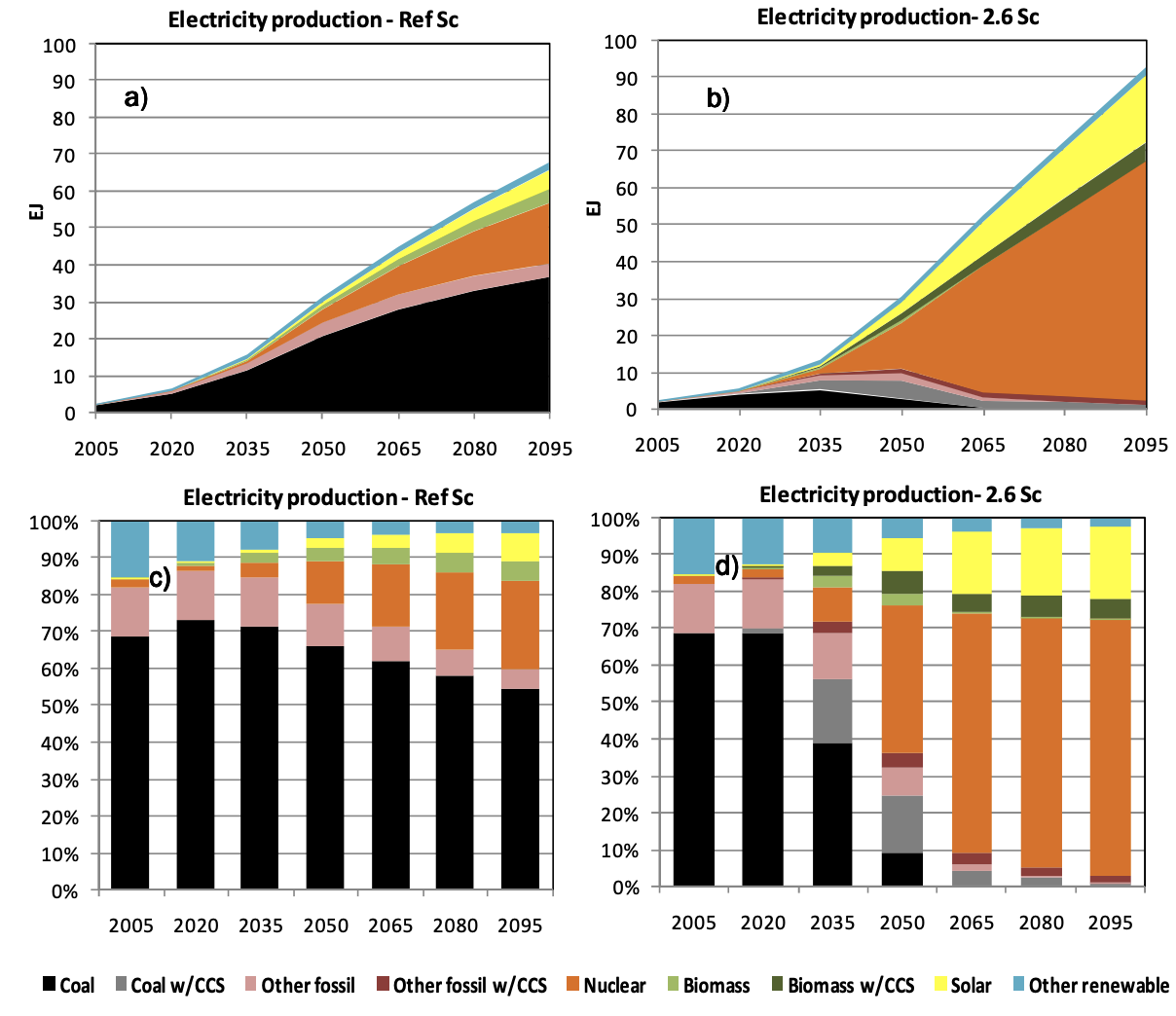
Key Highlights
- Nuclear energy is competitive when risk induced costs are low under the business-as-usual scenarios i.e. even in the absence of global climate stabilisation policies. The current operator's liability cap proposed by the Government of India does not impede the penetration of nuclear energy in India's electricity mix.
- If the risk induced costs are high, then the increase in nuclear energy deployment would be seriously curtailed in the short as well as long run. Economics then favours increased deployment of fossil fuels, leading to significant increase in carbon dioxide emissions. Lower nuclear energy penetration, hence, shall increase the amount of emissions required to be mitigated for meeting potential emission targets in the future.
- Nuclear liability off-sets climate liability. Nuclear energy is competitive in the long-run even with high risk induced costs if global climate stabilisation policies corresponding to global 2 degree C stabilisation targets are pursued.
- The fraction of nuclear energy in India’s future optimal energy mix is sensitive to the risk induced cost increases ( i.e. Indian society’s perception of the extent of risk associated with nuclear energy) and strictness of climate stabilisation target and related global policies.
- As the deployment of nuclear energy is decreased under higher cost increase scenarios, technologies that take on a greater role in India's mitigation strategy are solar technology and biomass with carbon capture and storage (CCS).
Electricity generation by technology and generation mix under the nuclear retire scenarios
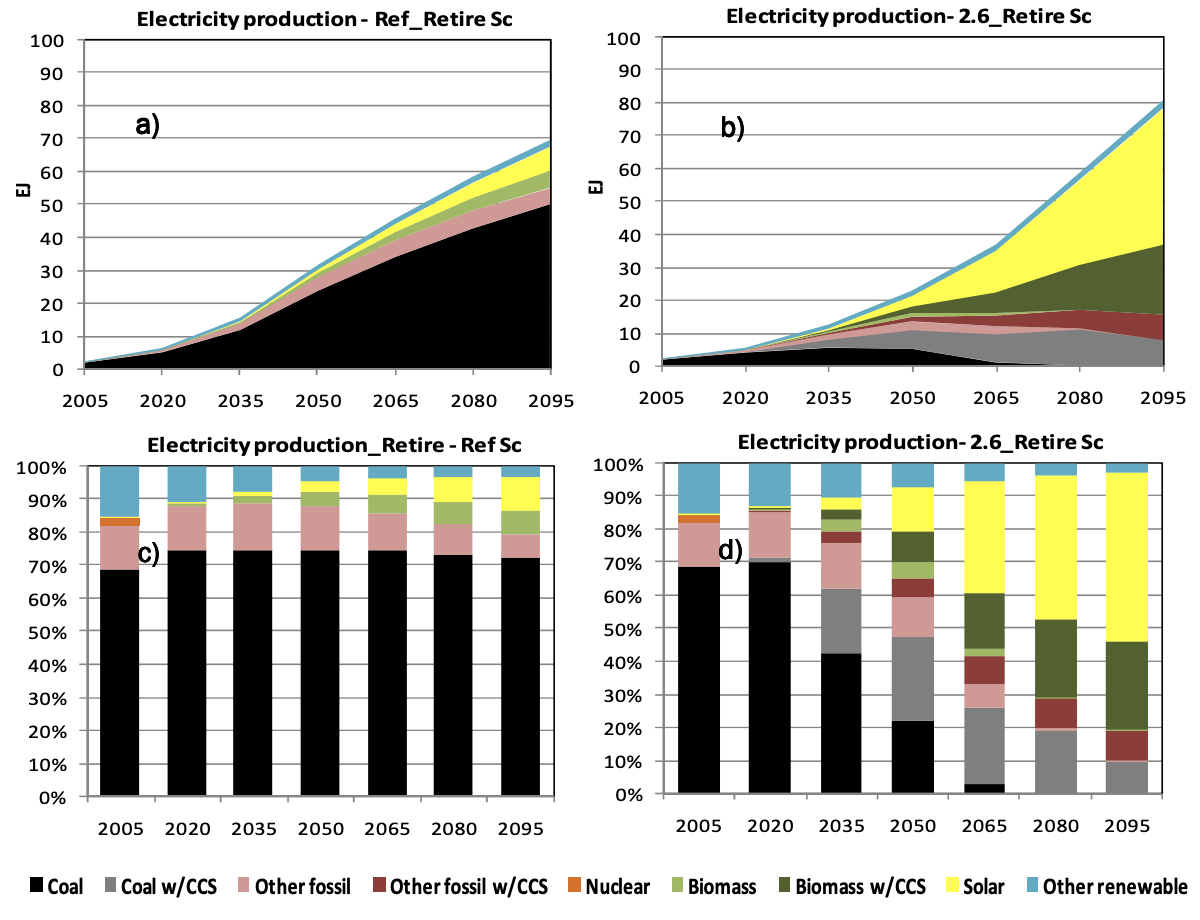
- Immense technical potential of solar energy in India becomes even more economically viable under the influence of a carbon price and higher cost (or absence of) nuclear power. Biomass with CCS becomes important as it is a source of negative emissions for two reasons: first, the electricity generation is higher under the climate policy and second, with less nuclear, the reference scenario emissions are higher due to the higher deployment of fossil energy.
- Increased costs of nuclear energy have serious implications for costs of meeting emission mitigation targets in the long run. In the medium run, till 2050, other low carbon technologies come in place of nuclear and the effect on mitigation cost is minimal.
- In the second half of the century, as the initial low cost potential of solar energy and CCS gets exhausted, mitigating emissions becomes more and more expensive in the wake of higher cost or absence of nuclear technology.
- The abatement cost as a percentage of GDP would be 3.1 per cent in 2095 with reference nuclear energy cost and penetration, which would increase to 5.1 per cent when nuclear energy technology is completely phased out.
- Credible risks assessment and its communication to stakeholders would be vital to ensure the due role nuclear would have in India’s optimal long-run energy mix through the century.
- Asymmetric information about the nuclear risks among the stakeholders, unless corrected, would lead to misallocation of resources in India’s future energy system. The added cost from this information asymmetry to India's energy system would be substantial and shall keep rising through the century.
- The added cost of deviating from the optimal energy mix under the symmetric information would be even greater, nearly 2 per cent of GDP in 2095, in case of stringent global climate change stabilisation agreement.
The abatement cost as a percentage of GDP would be 3.1 per cent in 2095 with reference nuclear energy cost and penetration, which would increase to 5.1 per cent when nuclear energy technology is completely phased out.






